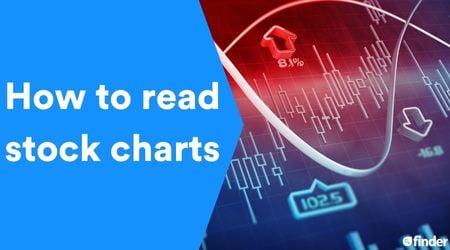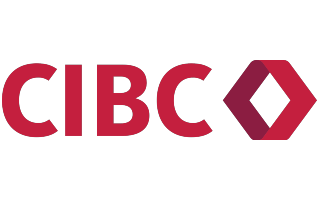Prior to 2020, the tide was picking up for cruise ship stocks as the industry saw substantial gains. But no-sail mandates sparked by COVID-19 brought it down. Cruise ship stocks remain in turbulent waters as uncertainty over the coronavirus lingers. But the industry may make a comeback as healthcare experts work with it to lay a framework for a safe return to sea.
What are cruise ship stocks?
Cruise ship stocks are ownership in companies that run cruise ships and transport passengers to their destinations while offering comfort and entertainment along the way.
Projected to be valued at $23.8 billion in 2021, the global cruise ship industry includes more than 270 ships powered by more than 50 cruise lines.
But 3 companies own about 75% of the market share: Royal Caribbean (NYSE: RCL), Carnival (NYSE: CCL) and Norwegian (NYSE: NCLH). The first 2 pay dividends to shareholders.
How to buy cruise ship stocks
There are several ways you can get your feet wet with cruise line investing. You can buy shares of individual cruise stocks. Or you can purchase shares of an ETF that invests in multiple cruise ship stocks and possibly other stocks in the travel industry. Here’s how to start:
- Choose a stock trading platform. You have plenty to choose from, so be sure to compare your options to find the one that works best for you.
- Open your account. Be ready with your ID, Social Insurance Number (SIN) and bank account information.
- Fund your account. You’ll need to transfer money to your brokerage account before you can start investing. Some platforms let you start with as little as $1.
- Search for stocks. Look up stocks by ticker symbol or use a stock screener to filter the types you’re interested in.
- Place an order. Once you’ve found an investment you want, specify how much of it you wish to purchase and submit your order.
- Monitor your investments. Track the performance of your portfolio by logging on to your account.
What stocks are in the cruise line sector?
- Royal Caribbean Group (NYSE: RCL)
- Carnival Corporation & plc (NYSE: CCL)
- Norwegian Cruise Line Holdings Ltd. (NYSE: NCLH)
- The Walt Disney Company (NYSE: DIS)
- Kiriacoulis Mediterranean Cruises Shipping SA (ATHEX: KYRI.AT)
- Hapag-Lloyd Aktiengesellschaft (OTC Markets, Pink Sheets: HPGLY)
- Genting Berhad (KLSE: 3182.KL)
- Lindblad Expeditions Holdings, Inc. (NASDAQGS: LIND)
Stocks in companies that support the cruise sector
- World Fuel Services Corporation (NYSE: INT)
Provides fuel for cruise lines - Agilysys, Inc. (NASDAQGS: AGYS)
Cruise management software and systems - STX Corporation (KSE: 011810.KS)
Ship building - Technogym S.p.A. (OTC Markets, Pink Sheets: TCCHF)
Gym equipment for home and commercial use (cruise line supplier)
- EVI Industries, Inc. (NYSE: EVI)
(EnviroStar) Laundry equipment for cruises - Sabre Corporation (NASDAQGS: SABR)
Travel booking services - Expedia Group, Inc. (NASDAQGS: EXPE)
Travel booking service - Travelzoo (NASDAQGS: TZOO)
Travel booking service
What ETFs track the cruise ship sector?
You can also invest in ETFs that hold cruise ship stocks along with equities from companies in other industries. Here are some to consider:
- Harvest Travel & Leisure Index ETF Class A units (TSX: TRVL)
- The First Trust Consumer Discretionary AlphaDEX Fund (NYSEARCA: FXD)
- Invesco S&P 500 Equal Weight Consumer Discretionary ETF (NYSEARCA: RCD)
- Invesco S&P 500 High Beta ETF (NYSEARCA: SPHB)
- Pacer Lunt Large Cap Alternator ETF (NYSEARCA: ALTL)
- ProShares Equities for Rising Rates ETF (NASDAQGM: EQRR)
- VanEck Vectors Africa Index ETF (NYSEARCA: AFK)
- SPDR S&P 500 ETF Trust (NYSEARCA: SPY)
- iShares Core S&P 500 ETF (NYSEARCA: IVV)
- Vanguard Mid-Cap ETF (NYSEARCA: VO)
- Vanguard S&P 500 ETF (NYSEARCA: VOO)
Why invest in cruise ship stocks?
Cruise stocks can surge in strong economies when people have more disposable income to travel. In the years leading up to 2020, the cruise ship business was becoming the fastest-growing sector in the travel industry. In 2018, the global cruise ship industry was valued at about $150 billion.
A 2016 study showed that the cruise industry contributes about over $3 billion annually to Canada’s economy. This includes both direct spending (i.e. cruise line expenditures) and indirect spending (i.e. travel agent commissions, on-shore spending by passengers and crew).
In 2019, cruising $5.5 billion in economic activity in the US alone. The amount represented a 5.3% increase from the year before, according to the Cruise Lines International Association (CLIA), which represents most of the globe’s cruise ship companies. This was fueled by a spike in people looking to take cruise vacations. In 2019, more than 1.37 million people boarded cruises departing from US ports—an 8% increase from 2018 and a 26% increase from 5 years prior.
But downturns in the global economy and the wider travel industry can cause cruise stocks to take a major plunge.
What unique risks does the cruise ship sector face?
The cruise ship industry is interconnected with lots of other industries and sectors. Take fuel, for example. If fuel prices rise, cruise lines will spend more to fuel their ships and profits will decline. Other sectors that can affect cruise ship stocks include:
- Industrial
- Food and beverage
- Apparel
- Tech
- Hospitality and leisure
- Arts and entertainment
- Finance and insurance
And of course, COVID-19 travel restrictions can mean fewer people are taking cruises and cruise companies are earning less money.
Each of the three largest cruise ship operators saw sales sink by at least 65% for the first nine months of 2020. As of December 3, 2020, Royal Caribbean Cruises stock had seen a one-year drop of about 33%. Norwegian Cruise Line Holdings stock sank by about 56% and Carnival plunged by nearly 52%.
While docked in Japan in February, 2020, the British cruise ship, Diamond Princess, experienced one of the largest coronavirus outbreaks outside mainland China at that time.
Data from the US Centers for Disease Control and Prevention (CDC) shows that through September 28 of that year, there were more than 3,000 confirmed cases of “COVID-19 or COVID-like illness cases” on cruise ships and 41 deaths.
Nonetheless, the CDC now says it’s ready to help the cruise ship industry get back to business. Public feedback shows that people are open to travelling as long as travel companies take measures to prevent the spread of COVID-19 including health screening, mask usage, social distancing and flexible travel bookings.
Time will tell whether increased safety measures and changing government policies will allow the cruise industry to rebound. But one thing’s for sure—it’ll be a while before things get back to normal.
Compare trading platforms
To invest, you’ll need a brokerage account. Explore your options below.
Finder Score for stock trading platforms
To make comparing even easier we came up with the Finder Score. Trading costs, account fees and features across 10+ stock trading platforms and apps are all weighted and scaled to produce a score out of 10. The higher the score the better the platform - simple.
Bottom line
After enjoying a period of growth, cruise ship stocks are now swimming through rough waters. The sector took a major hit from COVID-19, but changing health policies may allow the industry to rebound. Time will tell whether this actually happens.
Risk-taking investors could see opportunity in cruise ship stocks. But you might want to steer away if you prefer predictable and secure investments. Do your due diligence, carefully research companies and compare stock trading platforms before diving in.
Frequently asked questions
More on investing

What are the best stocks for beginners with little money to invest?
Want to dive into investing but don’t have much to spend? Take a look at these types of stocks.
Read more…
Meme stocks: What they are and examples of popular stocks
Meme stocks can produce large gains in short periods, but the stocks are volatile.
Read more…
How do ETFs work?
Your guide to how ETFs work and whether this type of investment is right for you.
Read more…
How to read stock charts
Learning how to read stock charts and recognize chart patterns can unlock your success as a trader.
Read more…
What are stocks?
Owning a stock means you own part of a company and can potentially grow your wealth. But there is a risk of loss.
Read more…
How to analyze a stock
Learn how to research stocks and find the right investment opportunities in 4 steps.
Read more…More guides on Finder
-
Full guide to paper trading accounts for 2025
How to choose the best paper trading platform to help you learn the ins and outs of investing.
-
How will tariffs affect the stock market?
Find out how the Trump tariffs will impact the stock market and explore Canadian stocks that may be resilient amidst tariffs.
-
What are the best stocks for beginners with little money to invest?
Want to dive into investing but don’t have much to spend? Take a look at these types of stocks.
-
Trading promos & investment account bonuses for 2025
Enjoy perks like free trades and cash back when you open a stock trading account with these online broker promotions.
-
TD Easy Trade review
Use this self-directed trading app to learn the basics of investing with a streamlined app and a number of free trades annually.
-
Best renewable energy stocks
These are the best renewable energy stocks to buy now in Canada.
-
10 best trading platforms and apps in Canada for 2025
Whether you’re a new or experienced investor, these are the best stock trading platforms and apps in Canada.
-
TD Direct Investing Review
Make quick and easy trades using this reputable online trading platform from TD.
-
RBC Direct Investing review
Here’s what you need to know about the benefits and shortcomings of this Big Bank investment platform.
-
Questrade review
Questrade is a leader among Canadian discount brokerages, but is it right for you? Compare fees, features and alternatives here.




